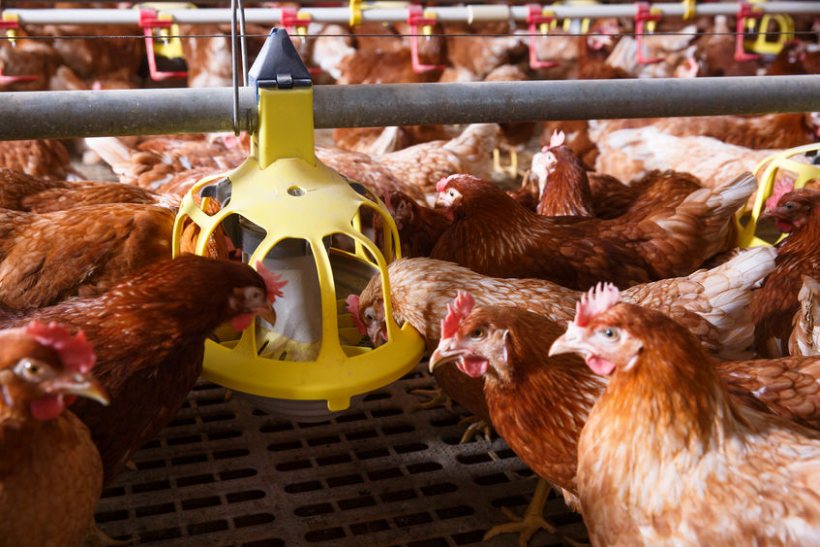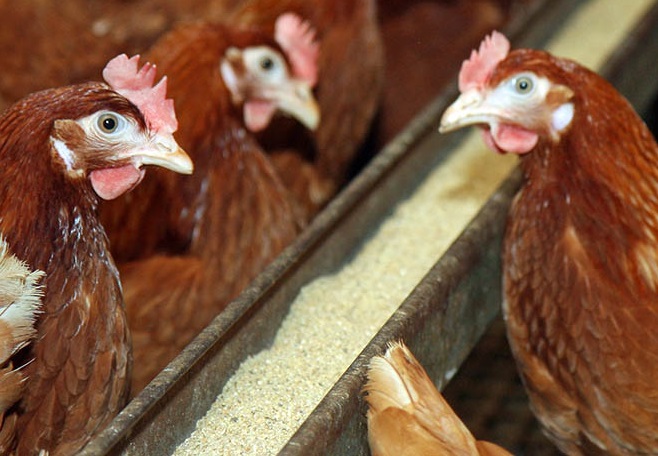
Poultry producers need to make every gram count at times of high market prices for feed, writes Premier Nutrition's Ralph Bishop.
Recent months have seen both cereal and protein prices in the UK rise sharply, significantly affecting the cost of poultry feed and egg production.
As egg producers, feed millers and nutritionists, we have little influence over these markets and there is no crystal ball.
However, there is plenty we can do to make every gram count and maximise the value of our feed.
Continuous work building our understanding of the nutritional and economic value of more raw materials is already helping the industry reduce its dependency on wheat and soya in poultry feed.
Many compounders and home millers will already be using higher levels of barley, oats, sunflower and rapeseed meal, where nutritional, economic and logistical factors all stack up.
Why do we use soya?
Soya has been the go-to protein source for poultry rations historically for several reasons.
Nutritionally its amino acid profile is closely matched to laying hen requirements, except for methionine and cysteine, which can be cost effectively supplied as single amino acids.
Soya also has relatively low levels of antinutritional factors and offers good nutritional consistency.
Globally soya dominates world oilseed and vegetable meal production. In the EU, rapeseed is the main oilseed produced but it is declining.
Soya has more presence in EU vegetable meal production, due to extensive imports of whole soya beans.
In comparison to these figures the EU produced less than 4MT of Peas and Beans combined in 2018/19 season.
The global scale and volume of soya production, with significant import programmes and continuity of supply makes using soya logistically easy.
What can be done immediately?
Understanding raw materials and making the best use of them is crucial when costs are high.
Take time to discuss quality and nutritional values prior to a purchase, conduct visual checks, take samples and follow your testing schedule, analyse and consider the results, for example:
• 1% movement in soya protein can be worth up to £1.50/t of feed.
• 1% movement in wheat protein can be worth up to £3/t of feed.
Make every gram count
Once the formulation is correct, we need to make sure the right diet is being fed to the birds. Matching the ration to the bird’s requirements can drive efficiencies.
This must be done with careful consideration of feed intake because birds eat grams of nutrients and not percentages in a formulation.
Feed wastage can be monitored, from taking delivery of raw materials or feed, to feeder management, are there areas that can be tightened up?
A 1g increase in feed intake or wastage is equivalent to over £2/t of finished feed.
What protein sources can reduce soya?
Sunflower
Sunflower meal is the most widely used alternative in the UK market, mainly in the 32% and 36% crude protein grades, offering rations both amino acids and a source of fibre.
All grades are high in fibre, although the lower the protein level the higher the fibre content.

Sunflower meal is higher in the amino acids, methionine and cysteine, so can complement soya in formulations.
It has a history and perception of giving issues with dirty eggs if used in certain circumstances, however if introduced gradually the birds can adapt accordingly either through rear and into lay or after placement in the laying house.
If sunflower meal is already used consideration should be given to which grade offers best value.
Rapeseed
Historically there was a risk of taint with brown layers when using rapeseed, but this is now not an issue with modern genetics.
There are two types of rapeseed meal on the market; extracted and expelled. Expelled is higher in oil and can offer good value in layers but continuity in supply is not as robust as extracted where market volumes are higher. Rapeseed meal comes with some salmonella risk that should be considered and managed.
Peas and beans
Peas and Beans are topical as home grown proteins although they also contribute valuable energy to rations.
Amino acid profile is poorer compared to soya and continuity of supply can be an issue for users requiring larger volumes.
If volumes can increase, when combined with single amino acids they have potential to offset soya usage.
Lupins
Lupins are also an option but depend on the agronomic conditions as to whether they can be grown successfully.
Available volumes are currently considerably lower than peas and beans. However, there is some usage and knowledge and understanding of lupins under UK conditions is growing.
DDGS
Distillers dried grains and solubles (DDGS) are a by-product of bioethanol production with potential for consistent UK production.
They have a favourable amino acid profile and high volumes of imported product are available. Although they can hold some mycotoxin risk which needs to be managed.
Meat and bone
At present legislation does not allow the use of meat and bone meal in UK poultry rations, although there are hopes this may change.
Meat and bone meal contains a good amino acid profile, although rigorous quality control would be required should legislation change.
Amino acids
The single amino acids (Valine, Isoleucine, Arginine and Tryptophan) are now also starting to feature more in diets and have an important role to play in complementing the ingredients discussed above.
Novel ingredients
Novel ingredients including insect and algae proteins also show future potential but at present are constrained by legislation, scalability and price.
Most likely these ingredients will first be seen in aquaculture and pet feed prior to poultry.
For all these alternatives it is important to remember that the addition of new raw materials changes the fundamental landscape of formulations in terms of fibre and oil levels particularly, which always requires further consideration.
Summary
At times of high market prices, we need to make every gram count.
This means making sure you’ve got both the diet right and the right diet in front of the birds.
Soya is a very useful ingredient, but several alternatives exist. Sunflower and single amino acids are already significantly reducing our dependence on soya.
Rapeseed, Peas, Beans and DDGS can also have an impact on soya levels, depending on market conditions.
In the longer term both novel and ‘’old’’ proteins may become more freely available with the potential to further reduce our reliance on soya.
These principles can be applied to cereals and protein equally and only get more important as prices increase.
